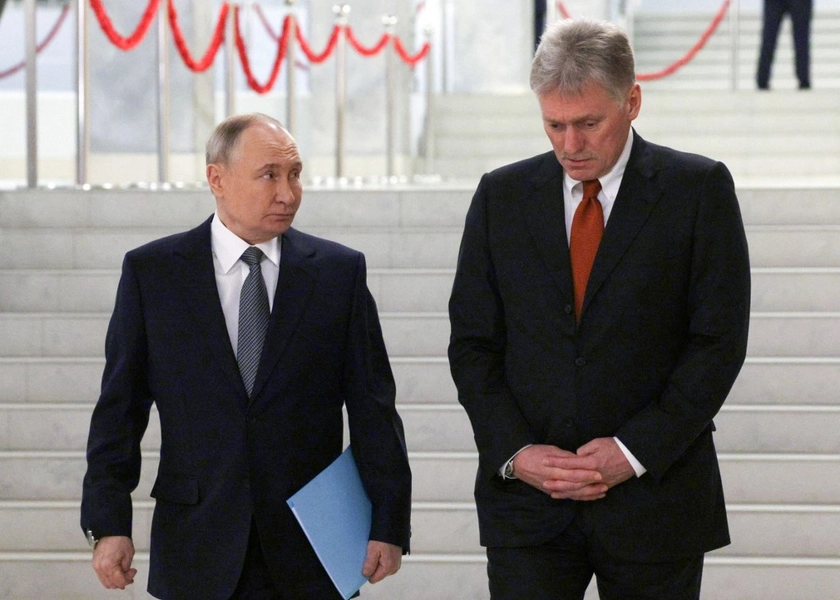Russia’s military command reportedly expected a potential breakthrough by Kyiv forces on the Kursk front for months before it happened and issued orders to strengthen defenses that were likely ignored, seized military papers show.
The documents were reportedly recovered by Ukrainian special operations teams in late August during the Kursk incursion and shared with The Guardian, which was allowed to view and photograph some of them.
JOIN US ON TELEGRAM
Follow our coverage of the war on the @Kyivpost_official.
One document in June reportedly warned Russian troops of Ukraine’s plans to seize the town of Sudzha, which houses a metering station that controls the flow of natural gas to Europe – which Ukrainian troops captured during the initial days of the Kursk incursion.
“The documents mostly come from units of Russia’s 488th Guards Motorized Rifle Regiment, and in particular the second company of its 17th Battalion,” the Guardian report says while noting that it “could not independently verify the authenticity of the documents.”
Content of seized documents
One document, dated Jan. 4, mentioned a “potential for a breakthrough at the state border” and ordered increased training for Russian troops in the region. Another, dated Feb. 19, warned of “a rapid push from the Sumy region into Russian territory, up to a depth of 80 kilometers [50 miles], to establish a four-day ‘corridor’ ahead of the arrival of the main Ukrainian army units in armored vehicles.”

Worldwide Marches Planned This Weekend Condemning 3rd Anniversary of Russia’s Full-Scale Invasion of Ukraine
In mid-March, border units were ordered to “organize additional exercises for the leadership of units and strongpoints regarding the proper organization of defenses” in case of a Ukrainian breakthrough in the region.
In June, at least one document specifically warned of Ukrainian plans to breakthrough “in the direction Yunakivka-Sudzha, with the goal of taking Sudzha under control.”
The document also noted that Russian border units were understaffed and undertrained, which corroborated recent accounts from captured Russian troops that fresh recruits in Kursk abandoned their posts due to fear and a lack of experience.
“There was also a prediction that Ukraine would attempt to destroy a bridge over the Seym River to disrupt Russian supply lines in the region, which also later happened. The June document complained that Russian units stationed at the front ‘are filled only 60-70% on average, and primarily made up of reserves with weak training,’” the Guardian reported.
A member of the special operations team who seized the files told news outlet that most Russian troops “ran away, without even evacuating or destroying their documents,” which allowed Ukraine to gain access to Russian intelligence information.
Proposed tactics
The seized documents showed that Russia planned to use decoys to confuse Ukrainian reconnaissance drones, though that was also apparently not implemented.
“Models of tanks, armored vehicles and artillery launchers should be created as well as mannequins of soldiers, and they should be periodically moved around,” reads one order, adding that Russian troops should light fires at decoy positions at night and create radio chatter with the aim of having it intercepted.
However, Ukrainian drone reconnaissance operators told The Guardian they perceived no such attempts.
An order in March also noted increased incidents of Ukrainians disguising themselves as Russian troops behind Russian lines and ordered new identification measures.
“To prevent enemy infiltration into our combat formations … commanders are to implement the use of identification marker variant N6, made from materials 8 centimeters (3.1 inches) wide, to be attached using invisible tape,” it read.
Systematic suicide issues
The documents also contained a report of a Russian soldier committing suicide on Jan. 20 by shooting himself in the abdomen and hinted at more similar incidents, highlighting a morale issue within the Russian military.
“The analysis of the current situation regarding suicides shows that the issue of servicemen dying as a result of suicidal incidents remains tense,” reads one entry.
“The investigation into the incident determined that the cause of the suicide and death was nervous and psychological breakdown, caused by his prolonged state of depression due to his service in the Russian army,” reads the handwritten report of the incident.
Russian commanders were also instructed to identify troops “mentally unprepared to fulfill their duties or prone to deviant behavior” and reassign them accordingly. It’s unclear if this was obeyed by the Russian military.
Another order also contained instructions on reserving time for political education “aimed at maintaining and raising the political, moral and psychological condition of personnel.”
You can also highlight the text and press Ctrl + Enter











